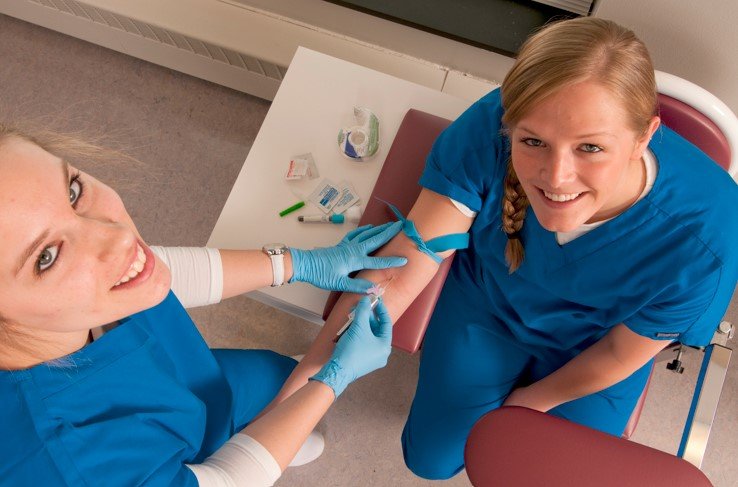Securing Medical Equipment and Devices in Hospitals: Best Practices and Industry Standards
Summary
- Hospitals must prioritize security measures for medical equipment and devices to protect patient data and maintain operational integrity
- Implementing strict access controls, encryption protocols, and regular security audits are essential in safeguarding medical equipment and devices
- Collaborating with cybersecurity experts and adhering to industry standards can help hospitals stay ahead of potential threats and ensure patient safety
Introduction
In today's digital age, hospitals rely heavily on advanced medical equipment and devices to provide quality care to patients. However, with technological advancements comes the risk of cyber threats and data breaches that can compromise patient safety and disrupt hospital operations. It is crucial for hospitals to implement robust security measures to protect medical equipment and devices, safeguard patient data, and maintain operational integrity.
The Importance of Securing Medical Equipment and Devices
Medical equipment and devices play a vital role in diagnosing, treating, and monitoring patients. These devices are often connected to hospital networks and store sensitive patient information, making them prime targets for cyber attacks. Without adequate security measures in place, hospitals are vulnerable to data breaches, malware infections, and other cybersecurity threats that can have serious consequences for patients and Healthcare Providers.
Risks of Inadequate Security Measures
- Unauthorized access to patient data
- Disruption of medical services
- Compromised patient safety
Consequences of Security Breaches
- Legal and regulatory penalties
- Damage to hospital reputation
- Financial losses
Best Practices for Securing Medical Equipment and Devices
To ensure the security of medical equipment and devices, hospitals should implement the following best practices:
1. Access Controls
Limiting access to medical equipment and devices to authorized personnel can help prevent unauthorized tampering and data breaches. Hospitals should implement strong authentication mechanisms, such as biometric scanners and smart cards, to verify the identity of users before granting access to sensitive equipment.
2. Encryption
Encrypting data stored on medical equipment and devices can protect patient information from being intercepted or stolen by cybercriminals. Hospitals should deploy encryption protocols, such as AES or RSA, to ensure that data is securely transmitted and stored on these devices.
3. Regular Security Audits
Conducting regular security audits and assessments can help hospitals identify vulnerabilities in their medical equipment and devices and take proactive measures to address them. Hospitals should enlist the services of cybersecurity experts to perform penetration testing and security evaluations on a regular basis.
4. Training and Awareness
Providing training to healthcare staff on cybersecurity best practices and raising awareness about the importance of securing medical equipment and devices can help prevent human errors and mitigate security risks. Hospitals should educate employees on how to recognize phishing emails, malware attacks, and other common cyber threats.
5. Collaboration with Cybersecurity Experts
Collaborating with cybersecurity experts and industry partners can help hospitals stay abreast of the latest cyber threats and security trends. Hospitals should participate in information sharing initiatives and work closely with cybersecurity organizations to exchange threat intelligence and best practices.
Industry Standards and Regulations
Compliance with industry standards and Regulations is critical for hospitals to ensure the security of medical equipment and devices. The Health Insurance Portability and Accountability Act (HIPAA) sets forth requirements for protecting patient data and establishes guidelines for securing Electronic Health Records. Hospitals should also adhere to the cybersecurity guidelines outlined by the National Institute of Standards and Technology (NIST) and other regulatory bodies.
Key Regulations and Standards
- Health Insurance Portability and Accountability Act (HIPAA)
- National Institute of Standards and Technology (NIST) Cybersecurity Framework
- Food and Drug Administration (FDA) Cybersecurity Guidance
Conclusion
Ensuring the security of medical equipment and devices is paramount for hospitals to protect patient data, maintain operational integrity, and safeguard patient safety. By implementing strict access controls, encryption protocols, and regular security audits, hospitals can mitigate the risk of cyber threats and maintain compliance with industry standards and Regulations. Collaborating with cybersecurity experts and staying informed about the latest security trends can help hospitals stay ahead of potential threats and ensure the security of their medical equipment and devices.

Disclaimer: The content provided on this blog is for informational purposes only, reflecting the personal opinions and insights of the author(s) on the topics. The information provided should not be used for diagnosing or treating a health problem or disease, and those seeking personal medical advice should consult with a licensed physician. Always seek the advice of your doctor or other qualified health provider regarding a medical condition. Never disregard professional medical advice or delay in seeking it because of something you have read on this website. If you think you may have a medical emergency, call 911 or go to the nearest emergency room immediately. No physician-patient relationship is created by this web site or its use. No contributors to this web site make any representations, express or implied, with respect to the information provided herein or to its use. While we strive to share accurate and up-to-date information, we cannot guarantee the completeness, reliability, or accuracy of the content. The blog may also include links to external websites and resources for the convenience of our readers. Please note that linking to other sites does not imply endorsement of their content, practices, or services by us. Readers should use their discretion and judgment while exploring any external links and resources mentioned on this blog.

